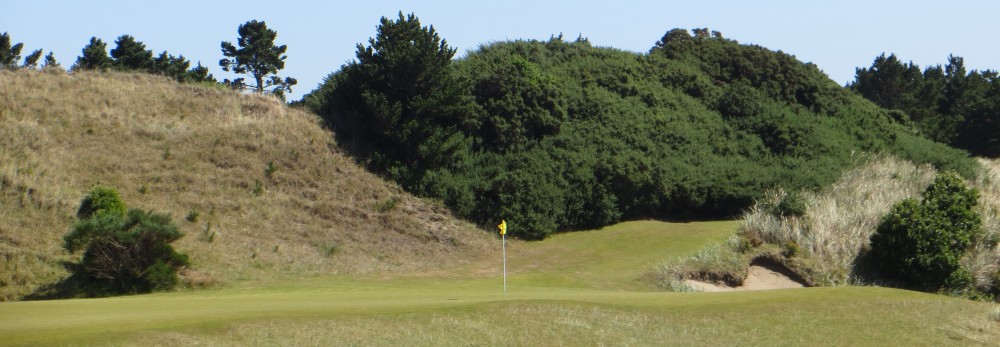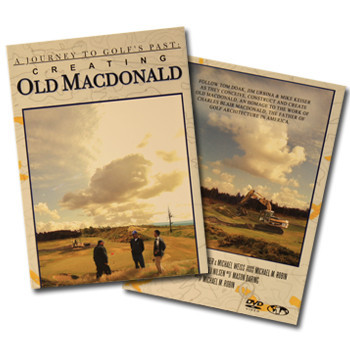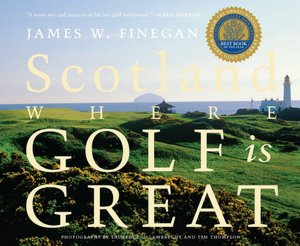 Playing on the links at Royal Dornoch or Pacific Dunes or The Old Course you cannot help but understand that there is is a different type of golf you are asked to play. Links golf is played closer to the ground, emphasizing finesse and position, thoughtful approach and recovery. This style of golf in unique both in strategy and shot implementation. The lure of links golf is infectious to those who have experienced it and explains why so many of us will travel to obscure destinations to experience it again and again. The subtle question that almost never occurs to us when we are playing links golf is how much does the sandy soil itself account for the character of these courses and the style of play they dictate.
Playing on the links at Royal Dornoch or Pacific Dunes or The Old Course you cannot help but understand that there is is a different type of golf you are asked to play. Links golf is played closer to the ground, emphasizing finesse and position, thoughtful approach and recovery. This style of golf in unique both in strategy and shot implementation. The lure of links golf is infectious to those who have experienced it and explains why so many of us will travel to obscure destinations to experience it again and again. The subtle question that almost never occurs to us when we are playing links golf is how much does the sandy soil itself account for the character of these courses and the style of play they dictate.
To George Waters, a course architect with plenty of credential from working on sandy soil terrain, this seemed a subject worth addressing in a book. He has worked on the construction or renovation of some of the best sandy soil courses in the world including Barnbougle Dunes in Australia, Sebonack in Long Island, The Renaissance Club in Scotland, and Pinehurst #2 in North Carolina. He spent considerable time working at Royal Dornoch as well as studying courses in the Sand Belt of Australia, Bandon Dunes in Oregon, the Sand Hills of Nebraska, and links courses throughout the British Isles.
His photographs and the accompanying text convey how the sandy soil and the topography that has evolved with it provide an opportunity for architects to create these sand based links, wonderful compilations of features provided by the great greenskeeper in the sky and some thoughtful contributions of their own. With a unique set of elements “designers let terrain shape the game rather than the other way around…. the key is to give players room to adjust their strategy to the conditions and their style of play. This puts a premium on analysis and problem solving, making golf more a thinking game.”
Water’s asserts that sandy soil gives these architects the optimal conditions for creative design. The rapidly draining turf allows them to maintain firm and fast conditions almost all the time. The natural depressions in fairways and greens can be employed in the design since they will not collect water creating troublesome soggy areas. Hearty long stemmed fescue and bent grasses thrive in this soil and can be kept closely cropped to allow for consistent firm and fast conditions.
Nature’s evolutionary effect on the sand based topography creates an array of natural hazards the designer only needs to compose rather than create. Fierce and penal blow out bunkers are only a scratch of the surface away which allows more arbitrary location of the fairway bunkers. Existing grassy mounds and protrusions can be employed in the lines of play to force strategic choices that need to be carefully considered but depending on the day’s wind direction and intensity. Native grasses and low growth plantings can be used to shore up these natural hazards further erosion and give these hazards an aged, seamless character “blurring the edges between golf and nature”.
These same native grasses create rough that is imposing but playable, “the perfect balance between penalty and recovery”. With the exception of the prickly dense gorse bushes that impose their presence on some sandy soil courses, recovery shots from the rough require a calculated assessment to determine just how much recovery is plausible on the next shot. Approach and recovery play a pivotal role on this type of course. “On well designed sandy courses, the interplay between firm conditions and clever architecture places approach and recovery shots among the highlights of any round.”
Playing these courses we come to quickly understand that the irregular natural terrain and the ever present wind dictate a more grounded style of play. Mildly articulated washboard roll outs or heaving tempests of hummocks and hollows can lead to existential shot results. A strategy of play to minimize their effect must be respected. But these same topographical irregularities are an ally in controlling the pace of a ground approach to firm, contoured, and wind swept greens that may not abide an airborne approach.
He talks at length about the green complexes on sandy soil courses being in sync with the topography. “Fairways relate to approaches, and approaches to greens, with continuity that is nearly impossible to achieve on other types of terrain.” Table top greens, greens with shoulder pads, punch bowl greens, greens with sweeping contours, and greens that just seem to be a natural extension of the fairway all are possible on this sandy soil base. With the challenge these complexes present green speeds do not have to be pushed to the maximum to challenge even the best players-this makes the course more playable and fun for players of all ability.
Waters concludes, “It is much easier to design and maintain a golf course in harmony with a sandy environment. On a forested site, comprised of heavy soils and replete with ponds and bogs, a golf course is more an installation in the landscape than a natural part of it.” The character of sandy soil courses “illustrate the advantages of valuing fun and playability above difficulty and perfect conditions, as well as the benefits that come with accepting some natural imperfection.”
If books like “Scotland-Where Golf Is Great”, “Emerald Gems-Links of Ireland”, “Links Golf” by Paul Daley and “Grounds For Golf” already adorn your personal golf library, “Sand and Golf” will find a comfortable spot right beside them.
Sand and Golf: How Terrain Shapes The Game
George Waters (2013)
January, 2014








